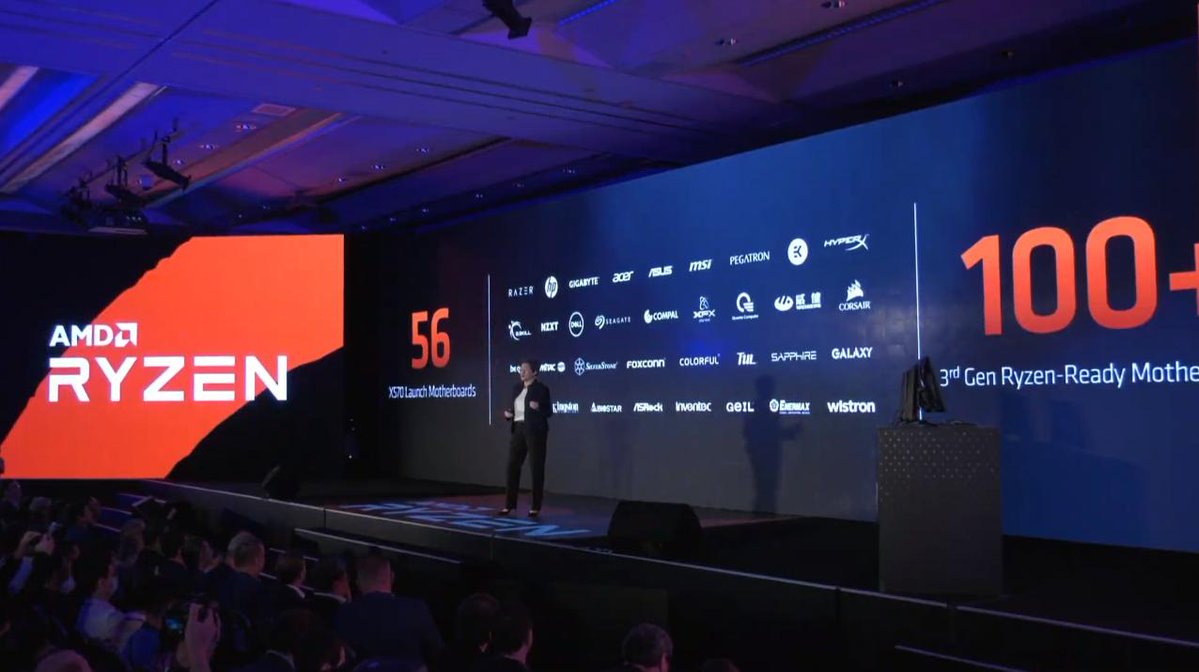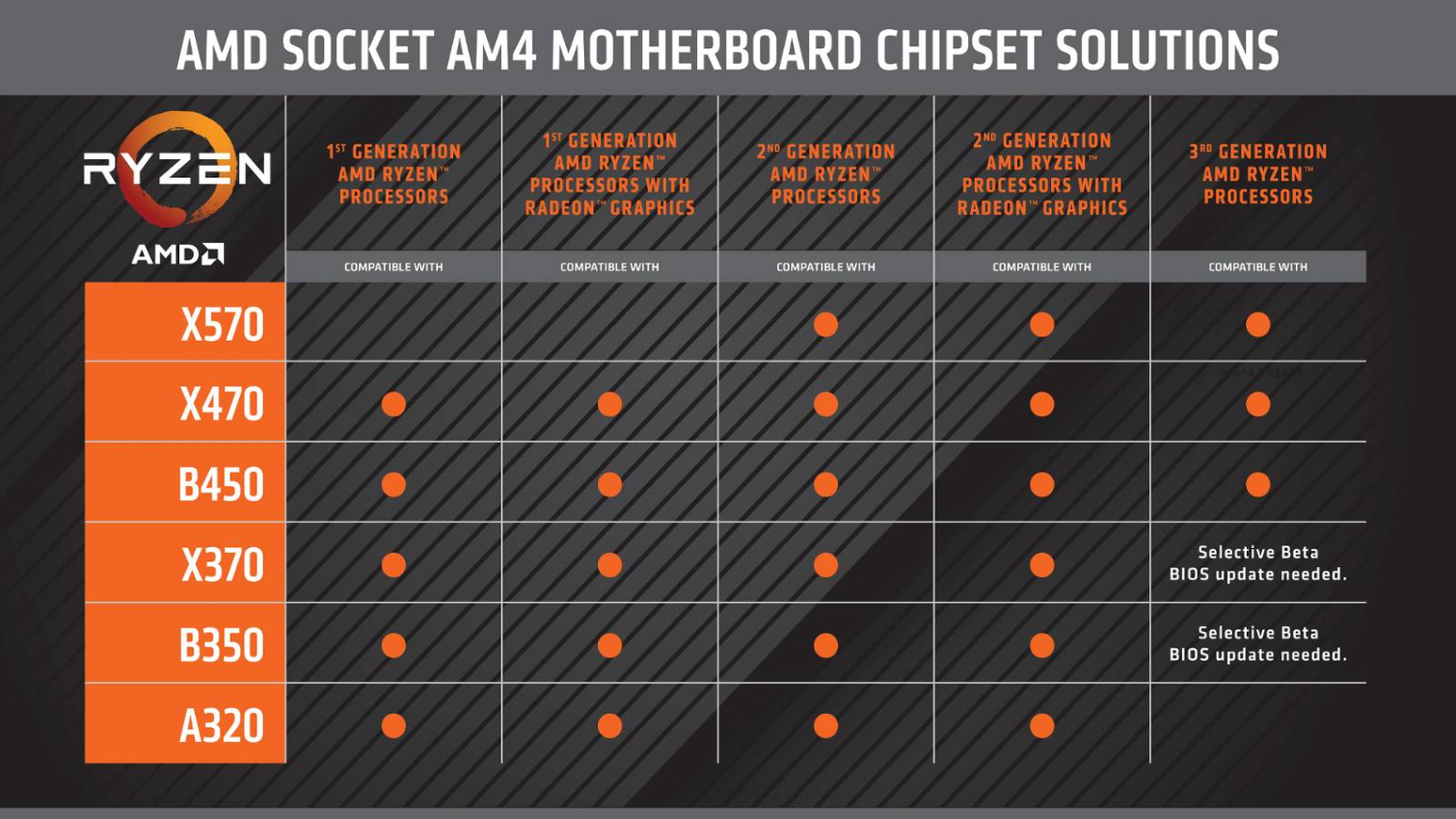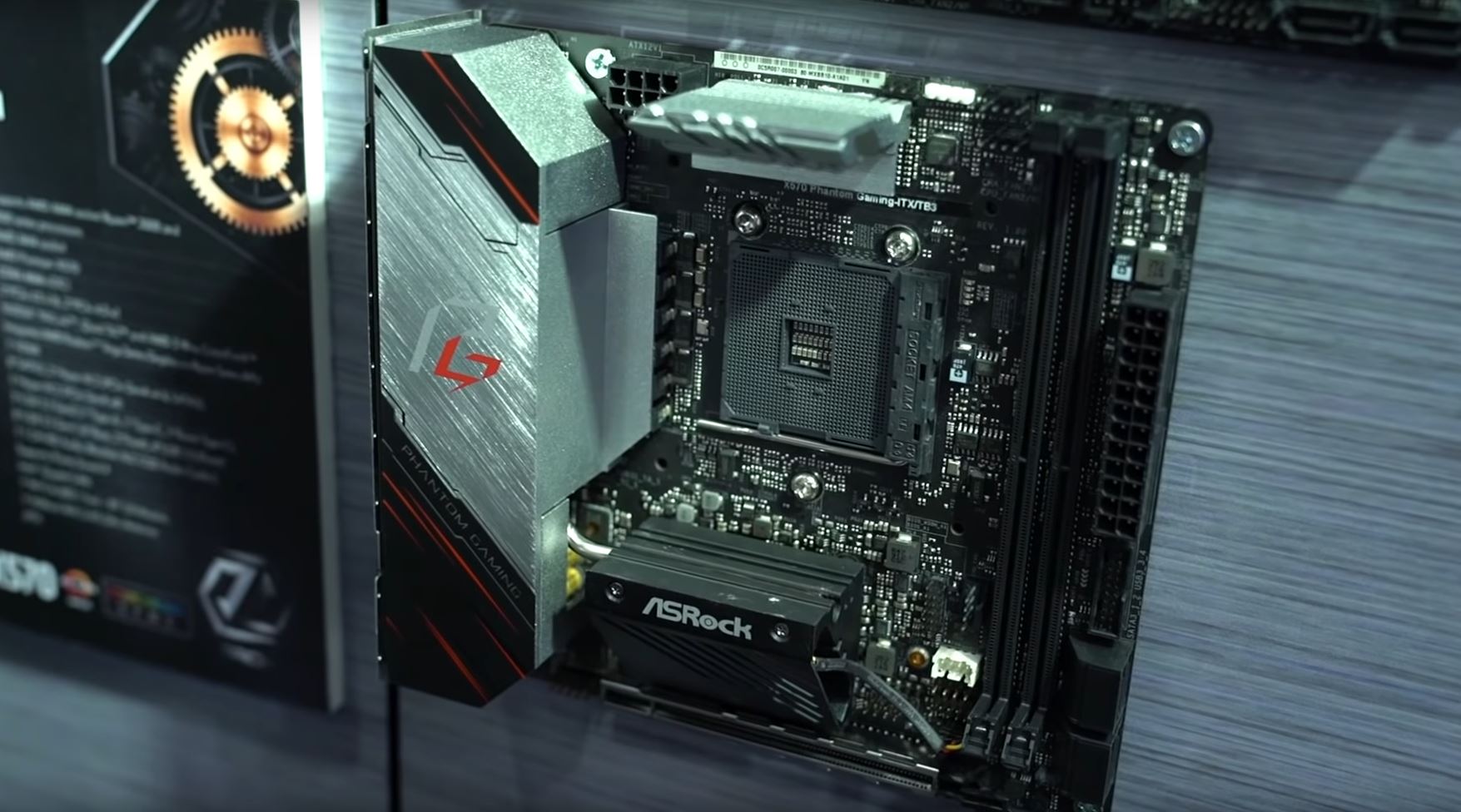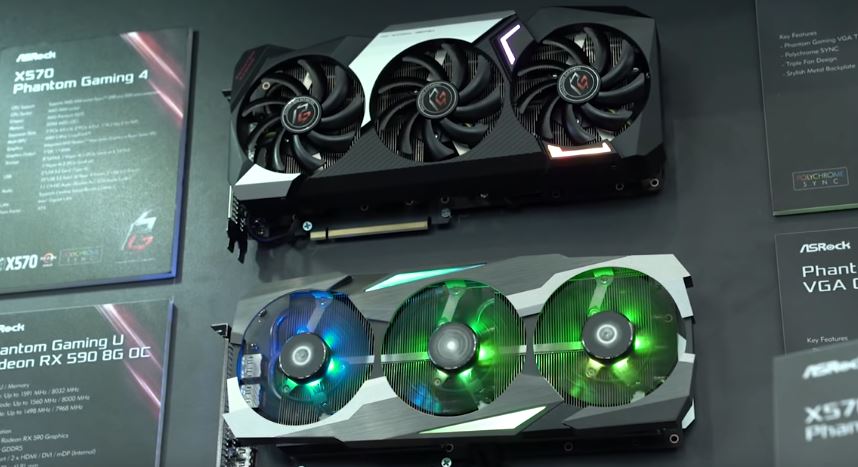
Computex 2019 kicked of with an industry-shaking keynote speech from AMD, and discussion surrounding their announcements hasn’t slowed down. After seeing how many other companies are unveiling products based on AMD’s latest technology, it’s probably fair to say that AMD is the star of the show this year.
Below, we’ve rounded up some info on what we know so far about AMD’s newest, as well as products from other manufacturers looking to leverage Team Red’s latest and greatest.
Ryzen 3000 Series
AMD’s biggest splash is obviously its just announced Ryzen 3000 mainstream series of processors, which are based on 7nm Zen 2 microarchitecture. These chips are slated to offer a huge power increase due to improvements in core die density and a slew of other engineering advancements.
So far, we know the lineup will have 5 entries in the series, across a broad spectrum of power levels and price points.
At the top end, there’s the first “Ryzen 9” chip, also known as the 3900X. This model will have 12 cores and 24 threads, clock speeds of 3.8GHz (base) and 4.8 (boost), a whopping 70 MB cache, all for $500 USD. All other entries in the series will be either octa- or hexa- core models, all with multithreading support. Also, at this point it looks like all models will have 40 PCIe lanes when coupled with the new X570 chipset.
Backward and forward compatibility look good as well. Ryzen 2000 CPUs are predicted to work with X570 motherboards, and it appears Ryzen 3000 CPUs will support older chipsets like X470 and B450. Obviously, this also means that these processors will use the same AM4 socket as previous generations. See the compatibility chart AMD has released below:

Finally, it looks like we can expect more than mainstream Ryzen 3000 CPUs. AMD has also confirmed that we’ll be seeing high-end desktop (TR4) and “ROME” server processors (SP3) based on the new 7NM process.
For more granular information, take a look at some of WCCFTech’s coverage of the keynote, which you should absolutely watch yourself if you haven’t yet.
X570 Chipset

To go along with their new CPUs, AMD has also announced their new X570 chipset, which as we mentioned, is still based around the well-known AM4 socket. This chipset itself offers a number of notable new features, but two stand out. As we’ve already mentioned, the Ryzen 3000 plus X570 combo will offer 40 PCIe lanes, and in addition, all of those lanes will PCIe 4.0 (also known as Generation 4) meaning that supported add-in cards will be some of the fastest we’ve ever seen.
What’s truly amazing is the number of X570 motherboards will be available on launch. According to the interview featured the top of this article, AMD expects 56 motherboards at launch, with 30 of those from ASUS alone.
ASUS motherboards run the full gamut, from options for the RGB addicted gamers, to workstation models, budget offerings, and even small form factor ITX and DTX boards.
ASRock has the expected selection of their Taichi boards, but also some new entrants. Not to mention this little oddity: A mini-ITX board with built-in Thunderbolt3, which only makes sense if you remember that TB3 will soon be USB4.
Biostar, Colorful, and MSI also have unveiled X570 offerings, and AMD themselves have showcased some entries from Gigabyte. All-in-all, it looks like everyone is getting in on the game.
One interesting thing to note: how many of these motherboards have fans over the chipset. This suggests that the TDP on on these is enough that passive cooling no longer does the trick. Current scuttlebutt suggests this increased power draw is mostly due to the new PCIe 4.0 capability of X570.
PCIE 4.0 NVMe SSDs
Some of the first products launched to take advantage of the new PCIe 4.0 standard are a number of NVMe M.2 SSDs.
So far, we’ve seen announcements from Gigabyte, ADATA, and Corsair (which has an awesome built-in heatsink.) Pricing and capacity data on some of these hasn’t been quite nailed down, but we can expect even higher read and write speeds across the board.
RX5700 ‘Navi’ GPU

Lastly, it’s hard to talk about PCIe 4.0 without mentioning the other major player using the technology, AMD’s 5700X Navi GPUs. Now not a ton is known about these cards yet, other than some broad points. We know that they’re based on a similar 7nm fabrication process as Ryzen 3000, we know they’re built on a new architecture called RDNA, and we know they’ll use PCIe 4.0 with GDDR6 memory. But as far as other specs, pricing, and series models, little else is known, but more is expected at E3.
However, none of those unknowns stopped ASRock from showing off their Navi concept cards.
AMD Superstar
With a solid looking suite of GPUs and CPUs coming down the pipe, it looks like Computex 2019 was AMD’s for the taking. Not only have they previewed a number of their own exciting products, but it looks like they have worked closely with their partners to unleash a range of new technologies for PC enthusiasts to latch on to. If Computex 2019 is any indication, the 2020s are shaping up to be a golden era for PC gamers and hardware buffs, which more and more processing power becoming more and more affordable.
Stay with Newegg for all the best coming out of Computex 2019, and as we cover the newest releases from AMD and their partners.
